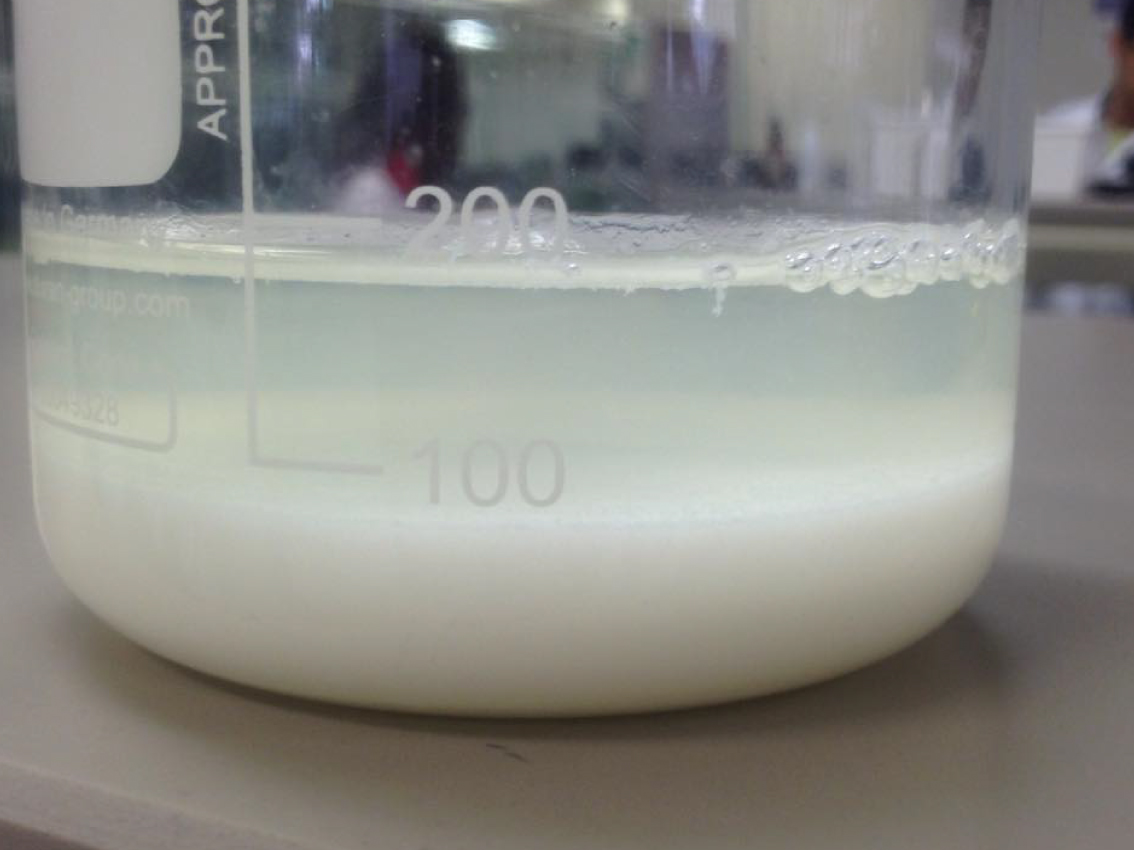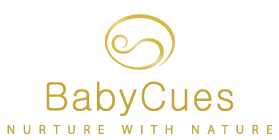What formula is best for baby?

While breastfeeding is, as many of you may know possibly after doing hours of research and trying many formula’s hoping that the next one will settle your child, deciding what formula is best for baby can be a hard decision. You may have also seen that the amount of choice on our supermarket shelves is exponentially increasing, as are the ingredients being used and the research that suggests that some of these formulas are best for your baby. So, let’s dig deep and get beyond the marketing hype so you can feel confident in making the best choice. To do this we will look at each kind of formula individually, when best to use them and I’ll share why they are great, or not.
What is dairy formula?
Dairy formula is considered to be the standard formula to place a newborn on unless problems like dairy allergy are found, which we will talk about soon. The first thing you need to know about dairy formula is that it has the two proteins, casein and whey within it, which are also found in breast milk. The second thing you need to know is how these proteins effect your baby’s digestive system.
Whey helps to empty the stomach faster, and casein does the opposite, slowing down digestion in the stomach as it coagulates the whey. This natural process of these proteins, in both formula and breast milk when a mother is eating dairy, can create pressure on the newborn digestive system up until at least the age of one. Before this, as a human race, we all struggle to break down the proteins in dairy. I’m going to repeat that because that sentence is important. All humans struggle to break down dairy in the first year of life, because of the proteins casein and whey. But, at the age of one the digestive system has developed enough, and baby is more used to processing food, that these proteins can be introduced, generally without causing too much upset.

Is dairy formula healthy for your baby?
It’s not exactly unhealthy, and it certainly isn't as bad as some of the others, as you will find out. But it’s not exactly the ‘perfect’ formula either. While you may think, ‘but I feed my baby dairy formula, or I eat dairy while breastfeeding and it doesn’t affect my baby.’ I can assure you that should you stop doing these things, your baby’s sleep and behaviour would be better, as would there bowel motions. What we have been conditioned to believe is ‘normal’ baby behaviour, isn’t necessarily 'normal' and by removing dairy you will be able to see that. I see this in my clinic time and time again. Not having dairy casein and whey in the diet is best for newborns in the first year of life. Please, please pass that on to any parents you know. You will be doing all of our newborns a fabulous favour.
Before we move onto goat’s formula, I briefly want to touch on dairy intolerance and dairy allergy. In my opinion, far too many newborns these days are being treated as if they have a dairy intolerance, or allergy, when in actual fact the baby is only experiencing the natural effects that casein and whey have on our bodies when fed this in the first year of life. I class this reaction to dairy as Dairy Overload, which is an aspect of Digestive Overload.
The difference between a dairy intolerance and allergy lies in the speed in which the reaction happens. An allergic reaction generally occurs within an hour to two hours, and is often very noticeable and the symptoms are sometimes severe. On the other hand, dairy intolerance symptoms occur over a number of hours, or even days with low to moderate symptoms. One of the common signs of this is eczema, and from time to time constipation. But this isn’t always present as it does depend on how baby is being fed. In both of these cases the reaction occurs because of the casein and whey. At these times baby will need to be fed a diet, or formula that has these proteins broken down. How much they need to be broken down is dependent on reaction. Goat’s formula can be a good choice if the reaction is low to moderate, because the proteins are already naturally broken down (pre-digested). In the more severe cases, a hydrolysed formula becomes the suitable option, which I will talk about soon. But if you just want to avoid the Digestive Overload behaviours that dairy can cause from feeding baby in the first year of life then goat's formula is the formula I recommend.
What is goat’s milk formula?
Goat’s formula is, in my opinion, the best formula on the market. While goat’s formula still has the proteins casein and whey, the casein that causes the reaction, is only found in trace amounts and is different from dairy casein. Breast milk contains beta casein as does goat’s formula, whereas dairy contains alpha casein. This casein is what newborns struggle with. This difference makes goat’s milk very easy to digest for bubs. This is the number one reason I would love to see goat’s formula become the standard choice of formula for our newborns. On saying that, you do still need to be aware of ingredients from brand to brand as some use maltodextrin in their formula, which is best to keep away from.
Another plus with goat’s milk is that baby will easily digest the fat content because, unlike cow’s milk, goat’s milk contains agglutinin. This means that the fat globules do not bunch together, leaving them to be absorbed more appropriately. Also, according to Dr Sears, goat’s milk contains ‘13 percent more calcium, 25 percent more vitamin B-6, 47 percent more vitamin A, 134 percent more potassium, and three times more niacin. It is also four times higher in copper. Goat's milk also contains 27 percent more of the antioxidant selenium than cow's milk. Cow's milk contains five times as much vitamin B-12 as goat's milk and ten times as much folic acid.’ But these days goat’s formula is fortified with folic acid and B12, meaning they have been added to make up this lack.

Is goat’s formula healthy for your baby?
Once thought of as unhealthy because of the lack of B12 and folic acid, this has all changed with fortified goat’s formula, which is healthy for your baby. It has no side effects, and in my opinion it is the healthiest option for baby when the conditions of dairy allergy are not present, and when dairy intolerance is not severe. At which point baby will need a hydrolysed formula. Also, be aware that goats formula has lactose in it. So if your baby has Galactosemia, otherwise known as primary lactose intolerance, which would see your baby failing to thrive, then goats is NOT an option. But you will be guided by your pediatrician in these cases.
I personally wish all newborns started on goat’s formula first, as I see a huge amount of newborns calm down when changed from cow’s to goats milk.
What is lactose free formula?
Well the name pretty much tells you what it is. It’s formula that is genetically modified to have no lactose. Given lactose is an essential nutrient for a baby’s development the question then is, when to use lactose free formula? The only reason your baby would need a lactose free formula is if they have Galactosemia – primary lactose intolerance, which shows with the very obvious symptom of baby putting on little to no weight, which would have them admitted to hospital. Despite the information on the internet, lactose intolerance is actually very rare. Secondary lactose intolerance and lactose overload are, on the other hand very common. But they still do not require you to feed a lactose free formula.
Secondary lactose intolerance happens when the villi in the small intestine are damaged by perhaps gastroenteritis and food sensitivities such as gluten. When the cause is found or stops, the villi repair themselves and lactose can again be absorbed correctly.
Lactose overload happens when a baby has an overload of lactose in the system. This can happen by feeding from both breasts in one sitting, frequent feeding and cluster feeding. When we change these ways of feeding for your baby, which work against their natural digestive functions in many ways, we can eliminate the symptoms of lactose overload.
Is lactose free formula healthy for your baby?
Only if they have Galactosemia. Lactose is an essential nutrient that promotes healthy brain development, optimum growth for the nervous system, absorption for calcium and phosphorus to aid bone development, friendly bacteria and of course, it provides calories and without it, well the side effects are obvious. In my mind, lactose free formula’s should not be a choice on our supermarket shelves, and should only be able to be obtained through prescription.
What is soy formula?
Quite simply, a harmful formula that no parent should ever consider. That may sound like scare mongering, and I’m sorry if it does, but when you look at all the research and the money making influence behind the billion dollar soy industry you can’t help but say, this is the truth. Dr Mercola, a women strongly fighting against the soy industry says, ‘soy formula is the most dangerous food you can give your baby. A baby fed on soy formula only, will take in an estimated three to five birth control pills worth of estrogen every day, depending upon the batch of formula and whether your baby is a big eater.’ The effects of this are ten-fold.
Is soy formula healthy for your baby?
Why even put the heading right. No it is not, and you can read about what it is in soy that makes it unhealthy here, plus what other researchers say that have been lobbying our government for years to ban it in New Zealand. Our New Zealand government say this, 'Under the advice of a health practitioner, soy based infant formula may be recommended as a substitute for a dairy based infant formula for infants with cows' milk allergy or intolerance, or lactose intolerance. However, up to 40% of infants who are allergic to cows' milk will also be allergic to soy.1 Ironically, while saying 'Under the advice of a health practitioner', the Ministry still allows soy formulas to be readily available in supermarkets, therefore being able to purchase with, or without advice.
What is hydrolysed formula?
Hydrolysis is a process that pre-digests the proteins casein and whey into smaller chains, thus making it easier to digest. You can get partially-hydrolysed formula (PHF) where the protein is hydrolysed to a level of smaller chains, and these formulas are available in the supermarkets in New Zealand and Australia. You can also get Extensively Hydrolysed infant formula (EHF) where the chain lengths are even more pre-digested than PHF, and these kinds of formula are now available on line and in some supermarkets. However, do still seek advice from a healthcare professional if you suspect cow’s milk protein allergy, and if you do get directed to use this formula you can check if it’s PHF or EHF by looking at the ingredients list, which will have those words before the protein. These formulas are also known as Hypo Allergenic and you will often see HA on the front of the can to denote this.
Is hydrolysed formula healthy for your baby?
If your baby has a moderate to severe dairy intolerance then hydrolysed formula is the formula for them. Is it healthy? In a way yes but it does come with some side effects that can cause your baby to be unsettled. They are green stools, watery stools, regular stools, because the food passes through the digestive tract more quickly, and more gas and bloating. These symptoms can have your baby looking to suck more often because of their discomfort, giving you the impression they are more hungry when in actual fact, they are looking to suck for comfort. So please don’t be tempted to feed above your baby’s stomach capacity for their age.
Also, if a baby has been on hydrolysed formula for a while and they then start solids this can cause upset and unsettled sleep. This happens because the digestive system hasn’t had to work at digesting the formula, so when solids are introduced it is a shock to the system. I have also found in-clinic that when newborns are moved from hydrolysed formula because they don’t actually need this, or are introduced solids after having this formula for a while, that many have forgotten how to push their bowel motion out. Hence constipation can be another issue, and parents need to begin teaching their child how to push to poo, which I teach in-clinic.
One other aspect to be aware of with hydrolysed formula are the ingredients. Most of the time they have additional ingredients to make them taste better. You can see which one's you want to avoid here.
What is amino acid formula?
Amino acid formula (AAF), also called elemental formula, have the proteins pre-digested to a minute size. These formulas are made for newborns and infants that have a severe allergic reaction to proteins. Lately we have seen an increase claim that this formula and hydrolysed formula can help with colic. This claim is based on very little research and healing colic does not require either of these kinds of formula. Like hydrolysed formula, amino acid formula can cause digestive issues when baby is introduced to solids and you need to be aware of the ingredients.
Is amino acid formula healthy for your baby?
Yes, if they have an allergy to dairy. Although, because it is so broken down baby usually exhibit the same symptoms that I mentioned in hydrolysed formula, but to a slightly higher degree.
What is anti-regurgitation formula?
AR formula is a rice thickened formula that apparently helps newborns reduce spit up. Marketed as a good choice for reflux, these formulas are not ideal for the digestive system of a newborn, because they do not have the enzymes required to fully break down rice in a healthy manner until at least one year of age - and yes that does include baby rice, which I also don't recommend for baby's before one. AR formula also, generally has ingredients that you don’t want to feed your baby with and, like many formulas on our market these days it hasn’t been around long enough to know the long term effects.
Is AR formula healthy for your baby?
No. Reflux, and I am talking Gastroesophaguel Reflux (GER/GOR), not Gastroesophaguel Reflex Diesease (GERD/GORD) that generally sees a baby gaining little weight, can be healed naturally without this kind of formula jeopardising your baby’s natural digestive function.
Organic formula
Organic formula generally has the same minerals and vitamins as a standard formula. What makes it an organic formula is how the animal is farmed that the formula was produced from. Organic formula is generally a lot more expensive than other formula, and while the idea of organic formula is great, and to be commended, I implore you to do your research on the brand you choose. I have looked at quite a few of these brands and sadly, when I dig deep into the website to find out what the company has to do to claim organic status, I have been disappointed. One brand that is growing in popularity in countries around the world has beautiful pictures of farmland, a little girl feeding a calf, the farmer attending his stock, so the very clean green image. I must admit I was getting more and more hopeful for our baby’s as I read there jargon. But then, buried in their website at the bottom of a long list of ‘standards information’ that most people would have given up reading, were two lines stating that for the cows to qualify they will ‘have complied with the conditions of this standard for a minimum of 90 days’ and ‘the cows have never been housed in their adult lifetime’. NINETY DAYS MINIMUM to not have chemicals pumped into them, or be fed the restricted diet that this formula companies standards require, and really, it’s not that hard to find cow’s that are ‘not housed in adult life.’ So again, please do your research on the brand you choose.
Is organic formula healthy for your baby?
Generally, yes it is but if you decide to go organic, choose goats organic over cow’s milk organic, and do your research on the brand.
Changing formula
If after reading this information you decide to change formula’s, then some combinations of formula changes have to be implemented slowly, so your baby’s digestive system does not feel overwhelmed.
Cows to goat’s milk you can change this very quickly. For six bottles a day, the ideal for a newborn to 3 or 4 month old, change three spaced feeds on one day, and then three feeds two days later after monitoring baby on the day in between. From my clinical experience it is very rare that any problems occur with this transition. If your baby is old enough to be having five feeds then the ratio becomes 3:2, and if older than this and down to three formula feeds a day then you can just swap the formula over.
Hydrolysed and amino acid formula to goat’s milk. This change has to be a little slower, because your baby needs to adjust to processing the proteins and fat again. For six bottles a day change two spaced feeds on day one. Baby can become a little more unsettled at first, or need anal stimulation, which I teach during consultations, to help them pass a bowel motion. So wait until you feel they are through that, maybe 3-5 days later. Then introduce another two feeds of goat’s formula and repeat the cycle. Each baby is different as to how long it takes for their digestive system to 'reset' itself.
Please note: If you are breastfeeding and decide to take dairy out of your diet, then please do boost your calcium intake with calcium enriched vegetables like kale, spinach, broccoli, snapped beans, butternut squash, sweet potato, parsnips, lettuce, and carrots. For fruit, papaya and raspberries. When eating the gassier food in this list, a good rule of thumb is to only have two servings of these (or any windy foods) a day so baby’s digestive system doesn’t become to uncomfortable. According to Laurel Wilson, an International Board Certified Lactation Consultant, research now shows that what breastfeeding mothers eat does effect the baby. I have continuously seen this over the years within my practice, so I am thrilled to see the research finally backing this up being recognised.
Also, please do seek a specialist health professional services if you are looking to adopt formula feeding.
New Zealand Ministry of Health - health.govt.nz/search/results/soy%20formula Publication - 02 November 2005








